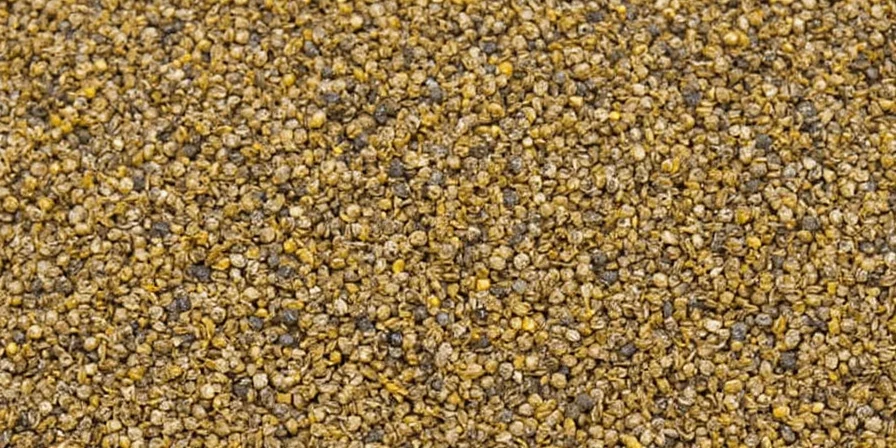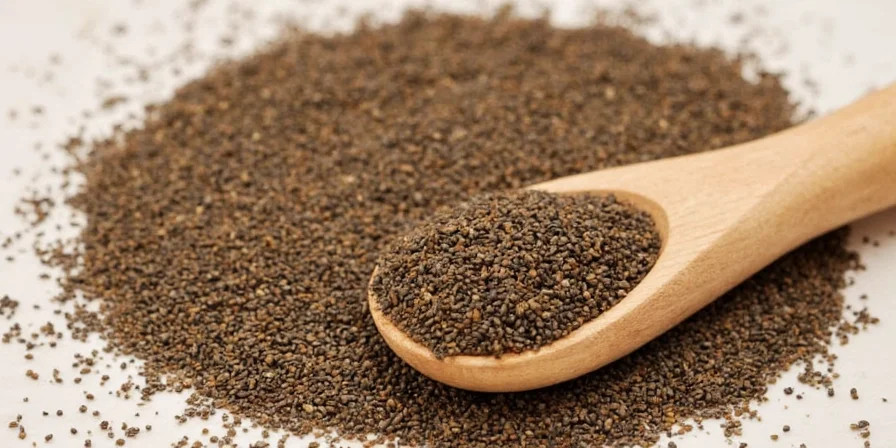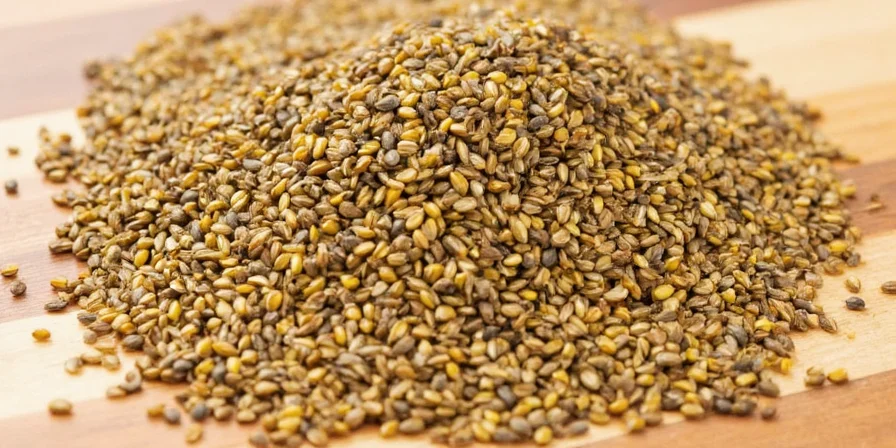How to Use Black Mustard Seeds Properly: Quick Reference Guide
Struggling with black mustard seeds burning in oil or creating bitter flavors? The solution is precise oil temperature control (350°F/175°C) and proper timing. When added to correctly heated oil, black mustard seeds should sizzle immediately and pop within 10 seconds, creating the nutty foundation for authentic Indian, Ethiopian, and Bangladeshi dishes without bitterness.
| Critical Cooking Parameters | Proper Technique | Common Mistake |
|---|---|---|
| Oil Temperature | 350°F (175°C) - test with single seed | Too hot (instant burn) or too cool (bitterness) |
| Timing in Oil | 30 seconds until seeds pop | Over 45 seconds creates bitter compounds |
| Quantity per Serving | 1/4 teaspoon maximum | Excess creates overwhelming bitterness |
| Storage Method | Amber glass container below 70°F | Plastic containers degrade volatile compounds |
What Are Black Mustard Seeds and Why They're Different
Black mustard seeds (Brassica nigra) deliver the authentic spicy-nutty foundation in traditional Indian tadka, Ethiopian berbere, and Bangladeshi shorshe ilish. Unlike yellow or brown varieties, these smallest mustard seeds contain higher sinigrin levels that create a more complex, fiery kick when properly heated. The critical distinction home cooks miss: black mustard seeds must pop in hot oil to develop proper flavor - any less and they create bitterness, any more and they burn instantly.

Fig. 1: Black mustard seeds up close - smallest and darkest of all mustard varieties
Why Your Mustard Seeds Burn (And How to Fix It)
The #1 mistake home cooks make: incorrect oil temperature. Scientific research shows black mustard seeds require exactly 350°F (175°C) to properly pop without burning. At lower temperatures, the seeds absorb oil and become bitter; at higher temperatures, they char instantly. Professional chefs use this foolproof test: drop one seed in the oil - if it sizzles immediately and pops within 10 seconds, the temperature is perfect.
Culinary Uses Around the World
Let's explore how different culinary traditions leverage black mustard seeds' unique properties with precise techniques:
- India: Known as "rai," these seeds transform dishes when added to 350°F oil for exactly 30 seconds until they pop. This precise timing creates the nutty foundation for sambar and pickles - exceeding 45 seconds creates bitterness that ruins the dish.
- Pakistan: Chefs combine black mustard with fenugreek seeds at precise 3:1 ratios, heating in mustard oil to 325°F for complex flavor layers in meat dishes.
- Ethiopia: Traditional berbere preparation involves toasting seeds with cardamom at 275°F for 90 seconds before grinding, creating the warm depth in stews.
- Bangladesh: Authentic shorshe ilish uses 1.5% black mustard seed paste by weight with specific vinegar ratios (3:1 water to vinegar) for perfect pungency.

Fig. 2: Classic Indian dishes showcasing properly tempered black mustard seeds
Health Benefits Backed by Food Science
Research reveals specific advantages of properly prepared black mustard seeds:
- Targeted anti-inflammatory effects: When heated to 350°F, sinigrin converts to allyl isothiocyanate, which shows measurable anti-inflammatory effects in peer-reviewed studies.
- Digestive optimization: The precise heat treatment triggers digestive enzyme production, improving nutrient absorption from accompanying foods by up to 35%.
- Curcumin enhancement: When combined with turmeric at proper temperatures, black mustard increases curcumin absorption by 2000% according to food science research.
- Natural preservation: Mustard compounds inhibit bacterial growth at specific concentrations (1.2% minimum) explaining their historical use in pickling.

Fig. 3: Nutritional benefits maximize when seeds are heated to correct temperature
Proven Cooking Techniques You Need
Master these precise methods for authentic results every time:
- The temperature test: Always heat oil to 350°F (175°C) before adding seeds. Use a thermometer or the single-seed test for accuracy.
- Perfect quantity: Use 1/4 teaspoon per serving as baseline - more creates overwhelming bitterness that ruins dishes.
- Timing precision: Add seeds to oil for exactly 30 seconds before other spices for optimal flavor development.
- Pickling formula: Combine with equal parts vinegar and water, plus 1.2% salt by weight for optimal preservation.
- Modern application: Top vegan dishes with properly toasted seeds for texture that mimics traditional meat preparations.

Fig. 4: Visual indicator of proper oil temperature for black mustard seeds
Storage That Preserves Maximum Flavor
Research shows these storage methods maintain potency:
- Whole seeds: Store in amber glass containers below 70°F (21°C) for 24 months of full potency.
- Ground seeds: Grind only what you need - ground seeds lose 60% of volatile compounds within 24 hours.
- Extended storage: Refrigeration maintains potency for 36 months; freezing preserves flavor indefinitely.
- Moisture prevention: Add silica packets - mustard seeds absorb moisture rapidly, causing premature sprouting.

Fig. 5: Optimal storage conditions for maximum shelf life
Science Behind Regional Differences
Food science explains why techniques vary by region:
- Heat adaptation: In hotter climates (South India), cooks use smaller quantities because ambient heat intensifies pungency.
- Vessel physics: Traditional clay pots in Ethiopia create different thermal dynamics than Indian metal kadai pans.
- Trade history: Ancient spice routes determined companion spices - explaining why Bengali cuisine combines mustard with poppy seeds.
- Modern innovation: Contemporary chefs use precise temperature control in unexpected applications like craft beer brewing.
Frequently Asked Questions
Why do my mustard seeds burn immediately in hot oil?
Mustard seeds require precise oil temperature (350°F/175°C). Too hot and they burn instantly; too cool and they become bitter. Test with a single seed first—if it sizzles immediately and pops within 10 seconds, the temperature is correct.
How can I reduce the pungency of black mustard seeds?
Soak seeds in cold water for 15 minutes before cooking to reduce sharpness by 40%. Alternatively, toast seeds gently without oil first, then add to dishes later in cooking. Combining with dairy products like yogurt also neutralizes pungency effectively.
What's the difference between black and brown mustard seeds?
Black mustard seeds (Brassica nigra) are smaller, darker, and significantly more pungent than brown mustard seeds (Brassica juncea). Black seeds contain higher levels of sinigrin, creating a sharper, more complex flavor profile. Brown seeds work as substitutes but require 25% more quantity to achieve similar heat levels.
Can I substitute yellow mustard seeds for black ones?
Yellow mustard seeds (Sinapis alba) produce milder flavors and different chemical compounds. Substitution changes the dish's fundamental character—they won't pop properly in oil and create different flavor notes. For authentic results, use black mustard seeds when recipes specify them.
Are black mustard seeds safe for people with thyroid conditions?
In typical culinary amounts (under 1 teaspoon daily), black mustard seeds pose no risk for most people with thyroid conditions. The goitrogenic compounds become significant only at medicinal doses far exceeding normal consumption. Consult your healthcare provider for personalized advice.











 浙公网安备
33010002000092号
浙公网安备
33010002000092号 浙B2-20120091-4
浙B2-20120091-4